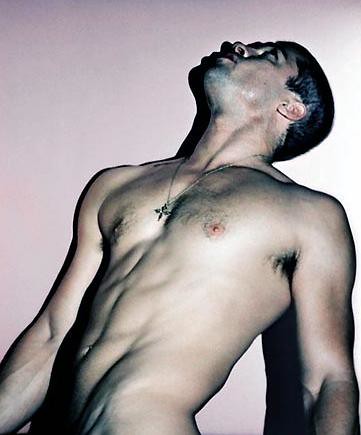 Live Longer!
Live Longer!A Canadian study of more than 8,000 people over 13 years found that those with the weakest abdominal muscles had a death rate more than twice that of the people with the strongest midsections.
Lift More!
A stronger core supports your spine, so you can lift more weight in every exercise. Case in point: Canadian researchers found that men bench-pressed 40 percent more on a stable surface -- which best supported their spines -- than on an unstable surface.
Prevent Injuries!
Research shows that men with the best-conditioned abdominal muscles -- guys who can perform at least 73 situps in 2 minutes -- are five times less likely to suffer a lower-body injury than those who can knock out only 50.
Research shows that men with the best-conditioned abdominal muscles -- guys who can perform at least 73 situps in 2 minutes -- are five times less likely to suffer a lower-body injury than those who can knock out only 50.
Improve Your Posture!
Tight lower-back muscles from excessive running pull your spine out of natural alignment. Strengthening your abs can correct this muscular imbalance, improving your body's posture to allow it to function properly.
Tight lower-back muscles from excessive running pull your spine out of natural alignment. Strengthening your abs can correct this muscular imbalance, improving your body's posture to allow it to function properly.
The Ultimate Abs Exercise Plan
Having worked at Men's Health magazine for more than 10 years, I've seen all the trends. (Uh, electrodes on my abs? No, thanks.) I've talked to trainers. I've tried just about every exercise ever concocted. In a lot of ways, my workout is my work. But I'm also busy with calls, meetings, and all the stresses that go with any job. So I know you want an exercise plan that fits into your life -- not one that is your life. This routine is short and simple. In addition to performing this workout three times a week, train your largest muscle groups with classic moves like squats, bench presses, deadlifts, and rows. And add the 12 Abs Diet powerfoods to your diet. The end result: You'll lose fat, build muscle, flatten your stomach -- and change your body forever.
The Workout
This abs workout routine attacks your midsection from every angle, so your abs are constantly challenged. Choose one exercise from each section, for a total of five. Perform one move immediately after the other for the specified number of repetitions, then repeat the circuit. After 4 weeks, choose the exercise in each group that you didn't perform in your previous abs workouts. This ensures that your muscles are always adapting to new stress.
Burn Off Your Belly
This interval routine is designed to strip away the excess flab that's hiding your six-pack. Do it 3 days a week, after your weight session or on the days in between. Use your mode of choice—a treadmill, stationary bike, or rowing machine.
Step 1 Warm up for 3 to 5 minutes at an easy pace, about 30 to 40 percent of your best effort.
Step 2 Run, cycle, or row at 95 percent of your highest effort for 30 seconds.
Step 3 Perform active rest, slowing back down to your warmup speed for 90 seconds.
Step 4 Repeat five to seven times.
Step 5 Once you can complete eight intervals, reduce the length of your active rest periods by 5 to 10 seconds each workout, until they're only 30 seconds long.
http://www.menshealth.com/downloads/downloads.php?Greatest-Abs-Workout-Ever-Print-it-37




















